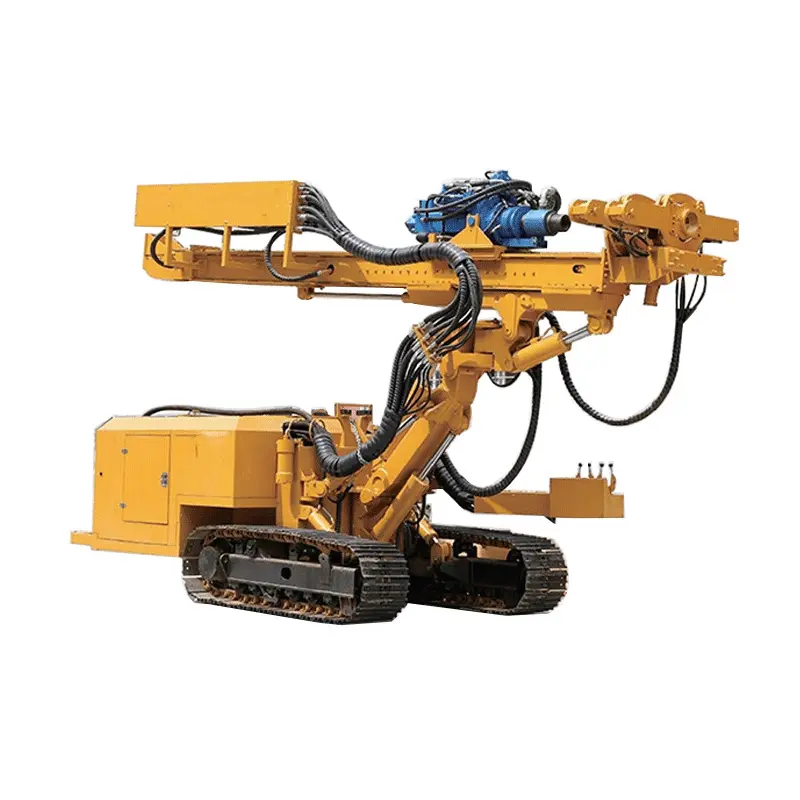 English
English שפה עברית
שפה עברית  Kurdî
Kurdî  Español
Español  Português
Português  русский
русский  tiếng Việt
tiếng Việt  ภาษาไทย
ภาษาไทย  Malay
Malay  Türkçe
Türkçe  العربية
العربية  فارسی
فارسی  Burmese
Burmese  Français
Français  日本語
日本語  Deutsch
Deutsch  Italiano
Italiano  Nederlands
Nederlands  Polski
Polski  한국어
한국어  Svenska
Svenska  magyar
magyar  বাংলা ভাষার
বাংলা ভাষার  Dansk
Dansk  Suomi
Suomi  हिन्दी
हिन्दी  Pilipino
Pilipino  Gaeilge
Gaeilge  Indonesia
Indonesia  Norsk
Norsk  تمل
تمل  český
český  ελληνικά
ελληνικά  український
український  Javanese
Javanese  தமிழ்
தமிழ்  తెలుగు
తెలుగు  नेपाली
नेपाली  български
български  ລາວ
ລາວ  Latine
Latine  Қазақша
Қазақша  Euskal
Euskal  Azərbaycan
Azərbaycan  Slovenský jazyk
Slovenský jazyk  Македонски
Македонски  Lietuvos
Lietuvos  Eesti Keel
Eesti Keel  Română
Română  Slovenski
Slovenski
Performance and applicability of drilling rigs under different geological conditions
2025-05-29
In the process of oil and gas exploration and mineral mining, the performance of drilling rigs as one of the core equipment directly affects the efficiency and safety of drilling operations. In actual applications, the performance and applicability of drilling rigs often vary with the changes in different geological conditions. Understanding these changes not only helps to choose the right drilling rig, but also enables efficient and accurate drilling operations in complex environments.
1. Differences between soft rock and hard rock geological conditions
Under soft rock geological conditions, the load of the drilling rig is lighter and the wear of the drill bit is lower. Therefore, in this case, the drilling rig can usually maintain a higher drilling speed. However, although the drilling process of soft rock is relatively smooth, problems such as groundwater flow may still be encountered, which requires the drilling rig to effectively cope with water pressure and water flow in the formation.
Compared with soft rock geology, the drilling difficulty of hard rock geology is greatly increased. Hard rock not only increases the wear of the drill bit, but also greatly increases the load requirements of the drilling rig. In this environment, the drilling rig needs to have a stronger torque output and a higher power system. In addition, in order to cope with the high density and high strength of hard rock, drilling rigs usually need to be equipped with stronger drill bits and ensure the stability of the system to avoid excessive vibration and failure.

2. Adaptability under sandy and clay geological conditions
Sandy geology is usually loose and has less moisture, so drilling rigs are more adaptable in such formations. However, the drilling process of sandy geology may also face problems such as hole collapse and drilling fluid loss. Therefore, the drilling rig needs to be equipped with an advanced circulation system to maintain the stability of the well wall. Under sandy conditions, the drilling rig's footage is usually faster, but how to control the direction of drilling and avoid well wall collapse is a technical difficulty.
Compared with sandy geology, the drilling difficulty of clay geology is more complicated. Clay has strong plasticity and is easy to deform during drilling and cause the loss of drilling fluid. In order to deal with this problem, the drilling rig needs to strengthen the drilling fluid treatment system in the clay formation to ensure that the drilling fluid can effectively support the well wall and prevent mud intrusion. At the same time, the design of the drill bit also needs to take into account the high viscosity of the clay layer to avoid the drill bit from getting stuck or excessively worn.
3. The impact of complex groundwater layers
In some special geological environments, there may be complex groundwater layers in the drilling area. In this case, the applicability and performance requirements of the drilling rig are further improved. The presence of groundwater layers not only increases the difficulty of drilling, but also may bring fluctuations in water flow and air pressure. This requires the drilling rig to be able to withstand higher pressures and effectively manage the circulation system of the drilling fluid to ensure the smooth progress of the operation.
In order to meet this challenge, modern drilling rigs are often equipped with advanced geological monitoring and water pressure control systems. By real-time monitoring of groundwater flow and pressure changes, operators can flexibly adjust drilling parameters, avoid potential safety hazards, and improve operating efficiency.
4. Challenges in deepwater environments
With the advancement of deepwater oil and gas exploration, the applicability of drilling rigs in deepwater environments has become particularly critical. In deepwater operations, drilling rigs need to overcome extreme water pressure, temperature, and complex geological structures on the seabed. The design and performance requirements of deepwater drilling rigs are much higher than those of land drilling equipment. Especially in the marine environment, the drilling rig needs to have not only strong drilling capabilities, but also anti-corrosion and anti-oxidation properties to cope with the erosion of seawater on the equipment.
In addition, changes in seabed topography and possible marine disasters need to be taken into account during deep-water drilling. Therefore, deep-water drilling rigs are often equipped with sophisticated navigation systems and remote control technology to ensure that drilling operations can be carried out efficiently and safely in complex environments.
5. Application in mountainous areas and complex geology
In mountainous areas or complex geological conditions, the adaptability of drilling rigs is required to be higher. The rock formations in mountainous areas are varied and the geological conditions are complex. The work of drilling rigs in this environment requires not only stronger power support, but also higher stability and durability. The terrain in mountainous areas is often uneven, which requires the drilling rig to have better maneuverability, be able to adapt to ground with different slopes, and ensure that operations are not restricted.
In complex geology, drilling work is usually accompanied by more risks, such as faults, folds and other geological phenomena. Therefore, the safety and reliability of the drilling rig are particularly important. By selecting the right type of drilling rig and combining it with on-site geological data, engineers can minimize potential operational risks.
The performance and applicability of drilling rigs vary significantly under different geological conditions. Understanding these differences and choosing drilling rigs according to geological characteristics is the key to improving drilling efficiency and ensuring operational safety. Whether in soft rock, hard rock, sand, clay, or complex groundwater layers and deep water environments, choosing the right drilling rig equipment can not only effectively improve operational efficiency, but also reduce equipment failures and personnel risks. With the continuous advancement of technology, modern drilling rigs are gradually becoming more adaptable and able to cope with various complex geological challenges, providing strong support for energy exploration and mineral mining.




